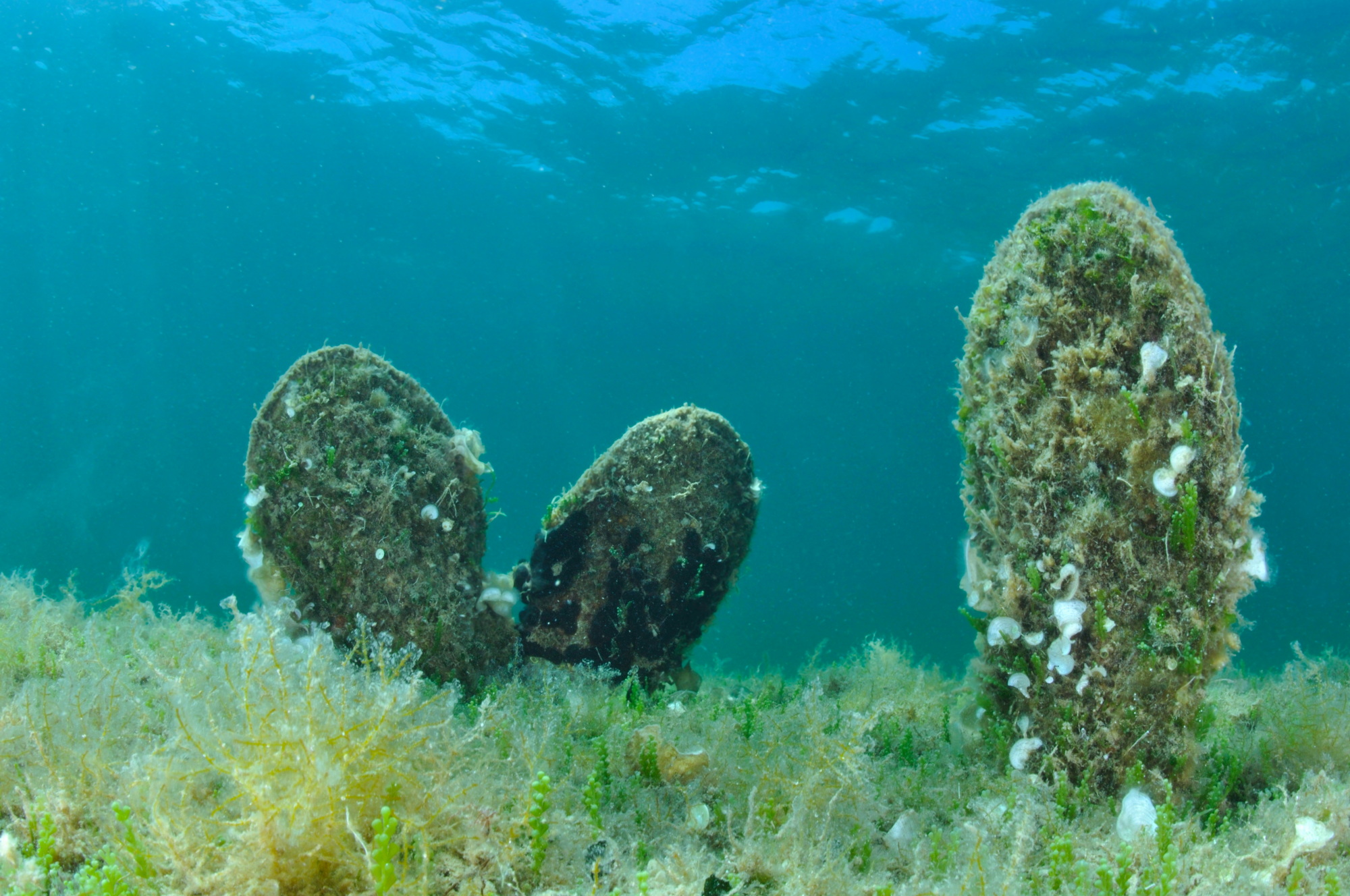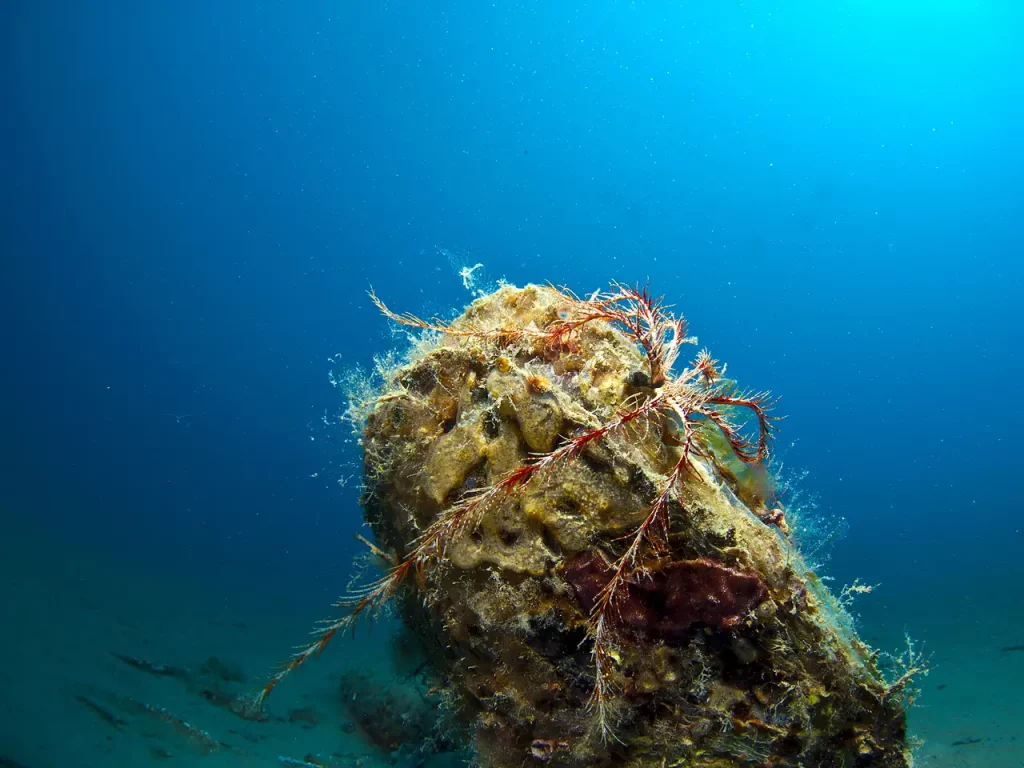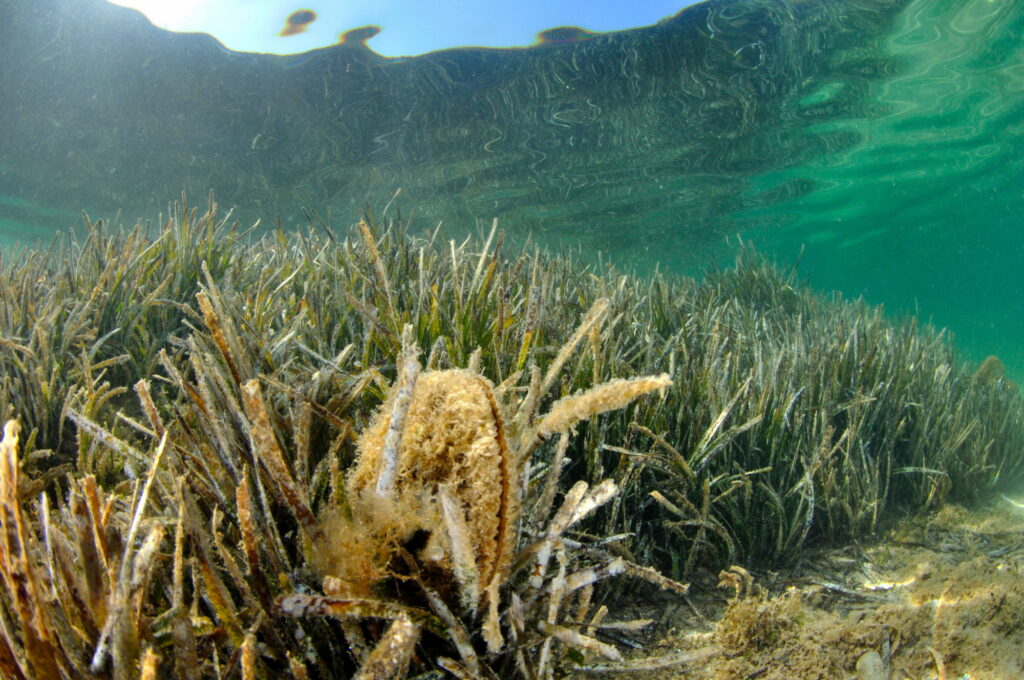LIFE Pinna


M. Colombo/Triton
United for the protection of this species: Triton Research as responsible for the communication and management of the project, ARPAL – Regional Agency for the Protection of the Environment Liguria (project leader), the Asinara National Park, the National Institute of Biology of Slovenia, the Shoreline Cooperative Society, the University of Genoa and the University of Sassari.
Commonly known as common fin, castanet, or feather mussel, the Pinna nobilis is today the largest bivalve mollusk endemic to the Mediterranean Sea, it can in fact exceed 100 cm in height and reach 45 years of age.
Its presence is often linked to the Posidonia oceanica meadows, a real ecosystem supporting the fauna biodiversity of the Mediterranean and protected by the Habitats Directive for its importance and at the same time fragility. It is precisely the habits of life, the occupied coastal habitats – shallow and easy to reach – and the anchoring structures to the substrate of the seabed, that have contributed to making the Pinna nobilis one of the most endangered species in our seas.
Collectors of shells and collectors of byssus (a precious set of filaments produced by Pinna specimens to anchor themselves to small rocks and submerged plants and used by humans as raw material to produce textile fibres), have in the past decimated the species on a local scale.


M. Colombo/Triton
Today, unfortunately, the species continues to suffer from a serious demographic decline, due to various anthropogenic factors, such as the aforementioned illegal harvesting for ornamental purposes, recreational and commercial fishing, coastal infrastructure, the use of anchors, pollution and trawling.
But the most impactful negative factor is played by climate change, which is linked to the increase in water temperature, harmful to the development of younger specimens which has probably also led to the spread of a protozoan, the Haplosporidium pinnae, capable of reducing the ability to assimilate nutrients in all specimens attacked by the disease, leading to early death and an increased risk of predation.
The mollusc is now classified as Critically Endangered on the International Union for Conservation of Nature’s Red List. In the event of an extinction in the wild, the loss in terms of biodiversity and ecosystem services would be very serious.
LIFE Pinna
Several, and all equally important, are the actions put in place by the LIFE PINNA project:
01
Selection of restocking sites suitable for the survival and reproduction of Pinna nobilis, using sentinel species of molluscs (Mytilus galloprovincialis spp.) as bio-indicators of the presence of etiological agents in coastal environments.
02
Gathering information on environmental and ecological characteristics that can sustain a viable population of Pinna nobilis.
03
Definition of the best techniques for the collection of live specimens, transport, growth monitoring, reintroduction into the wild.
04
Constant comparison and transfer of know-how with other European projects on best practices for the transport and handling of specimens of Pinna nobilis.
05
Collection of juvenile specimens for captive breeding.
06
Reproduction and captive breeding of specimens of Pinna nobilis to be reintroduced into the wild.
In particular, this last action is the most challenging for the whole working group, representing a pioneering action, never tested on Pinna nobilis, although it is based on protocols and projects carried out for other species.
In charge of Triton:
- communication actions, with the primary aim of developing and implementing a communication plan that can make the main objectives of the project known to the widest possible audience of sea users;
- the management and operational coordination of all actions;
- the replication and transfer of good practices and effective methodologies used within the project, amplifying the impact in other geographical areas, at other institutions, in various ways interested in the protection of marine biodiversity and on other species;
- networking activities with other LIFE and other projects for the entire duration of LIFE PINNA, providing opportunities for discussion, exchange of experiences and sharing of technical-scientific documents through dedicated events.


